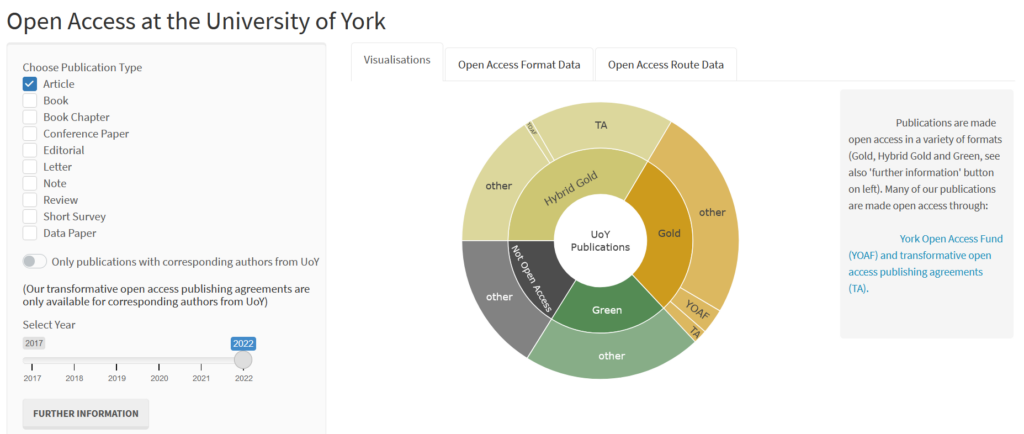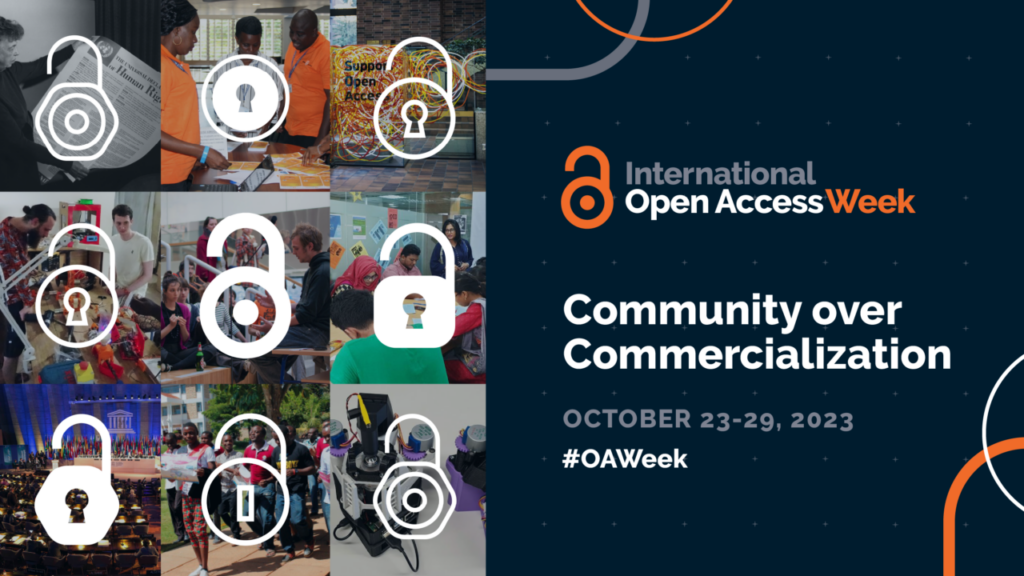Kate Petherbridge (Press Manager, White Rose University Press) on challenging the commercial focus in academic publishing
Open access (OA) publishing is no longer new, though the OA landscape continues to evolve. There are now a range of publishers offering OA publishing routes. Numbers of new OA university presses continue to grow as more institutions see the value of offering in-house, practical support for OA publishing and for their academic authors who are engaging with this.

The current publishing landscape is very different to that which the earliest OA presses joined. Presses like the University of York’s own OA university press, White Rose University Press (operated in collaboration with the Universities of Leeds and York), and UCL Press opened around 2015/2016. They found new OA presses like themselves were fairly isolated voices in a commercially-dominated world. They were in the vanguard of a growing movement, however. Indeed, the 2017 report Changing publishing ecologies: A landscape study of new university presses and academic-led publishing by Janneke Adema and Graham Stone, discussed this emerging new wave of university and scholar-led presses, the majority of which were OA or part-OA, and highlighted the impact this trend could have on what had become a very commercial publishing industry. The growth of, and increasing funder focus on, OA dissemination drove development, and brought the publishing industry to a turning point.
A growing sense of community
Many OA university presses are library-led, or connected to the university library. Some, including White Rose University Press (WRUP), have press managers and staff with library backgrounds – though many others come from the commercial publishing sector too. A theme that unites many OA presses is the drive to deliver “publishing as a service”, with a strong connection to the open research and scholarly comms support institutions offer to their academic staff. As well as this support for the local academy, a central part of WRUPs vision and mission is a commitment to support the wider OA movement. It’s notable that OA presses and publishing operations see their peers not as competitors but as allies in making the change to an open scholarship environment.
The emphasis on this shared goal, and the drive to support each other as part of a wider publishing movement, is a strong foundation on which to build a community. As the first wave of OA presses emerged, there was an initial sense of togetherness and of sharing of new knowledge and processes as presses established themselves. This was done informally across what was, initially, a small number of presses. Over time, we grew in numbers and experience and were able to work together as a community in more concrete ways.
An active OA publishing community emerges

In 2021, some of the more established of the new OA university presses came together to work with Jisc on a toolkit. This was designed to support other universities who were looking to set up their own OA university presses. The New University Press Toolkit gives advice on different business models, on setting up editorial and management structures and processes, and also shares examples of governance documentation. It is based on the experience of the presses (including White Rose University Press) that make up the toolkit’s editorial advisory board. These publishers were happy to come together to support new players in joining the OA publishing arena. This would be counter-intuitive in a commercial-focused environment. The switch to a service and support ethos means that aiding the growth of the OA sector brings benefits for all involved. Increasing the OA publishing options, and helping new voices join the debate, adds further weight to the OA publishing movement and strengthens the community behind this.
A diverse institutional OA publishing environment
To this point, this post has focused on OA publishers and presses. An OA university press is often the most visible way an institution can deliver OA publishing activity, but the OA publishing ecology is actually very diverse. The numbers of universities who are founding their own OA presses continue to increase. However, for some institutions this is not a viable option, or not an option they currently want to pursue. Universities without a formal OA press can still undertake institutional OA publishing activity. Some institutions, for example, host open infrastructure that supports publication of OA books and/or journals by their academic colleagues. In some cases, like Edinburgh Diamond, these services are also offered externally, to the wider academy. Some institutions offer formal OA publication options to their academics via institutional repositories. Some provide infrastructure to host open teaching resources. All these OA publishing activities are equally valid and are important elements of a successful change to an open scholarship environment. Some may not consider themselves as publishing, however, or perhaps to this point have not felt able to join discussions that have focused primarily on formal university or scholar-led presses.
The increasing recognition of the diversity of the OA publishing community, and the value this diversity brings, is important. It is another difference between this and commercial publishing, where the focus is on formal publishing via a recognised publisher. All those who undertake OA publishing activities face similar issues, however. Discussions about funding, policy, compliance, licensing, rights, dissemination, academic rigour, production processes, will be common across all these activities. The different perspectives and approaches they bring can only help in e.g. establishing best practice, and in finding new solutions or ways to communicate key messages.
The importance of open institutional publishing in all its forms is recognised in the founding of a new association, the Open Institutional Publishing Association (OIPA). WRUP has been instrumental in setting this up, and it is designed to bring together a community of practice that supports OA publishing activity at HEIs in the UK.

Formalising this gives a shared voice to often small OA publishing undertakings that nevertheless, together, make a significant contribution to OA support in the UK. This new association is open to membership applications and is in the latter stages of setup and launch, with the inaugural meeting set for November 2023. The level of interest and membership applications already received show the engagement of the OA publishing community. It reinforces the position that this area of publishing is focused on collaboration and mutual support, rather than commercial competition. In strengthening the OA institutional publishing community, we are also strengthening the support this community can give to academic authors as the move to open scholarship continues.









